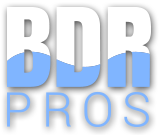Mold Remediation
Nothing Is More Important Than The Air You Breathe
Suffering from unexplained coughing, sneezing, watery eyes, headaches, allergic reactions or congestion? You could be suffering from the effects of mold.
For significant mold growth to occur, there must be a source of water (which could be unnoticed humidity), a source of food, and a substrate capable of sustaining mold growth. Common building materials such as plywood, drywall, furring strips, carpets, and carpet padding are the most common food for molds’. In carpet, invisible dusts are an easy food source for the silent growth of mold.
When we attack your mold problem, we make sure we confine it to the affected area and so it doesn’t spread throughout the building. The spread of mold spores to an originally uncontaminated area may allow for the many food sources to be found. We use industry best practices and we work with you to minimize the disruption to you.
After a single incident of water damage occurs in a building, molds grow inside walls and become dormant until a subsequent incident of high humidity; this illustrates how mold can appear to be a sudden problem long after a previous flood or water incident did not produce a mold-related problem. The right conditions re-activate mold. Studies also show that mycotoxin levels are perceptibly higher in buildings that have once had a water incident.
Both our indoor and outdoor environments have mold spores present. There is no such thing as a mold free environment in the Earth’s biosphere.
Spores needs three things to grow into mold:
- Nutrients: Food for spores in an indoor environment is organic matter, often cellulose.
- Moisture is required to begin the decaying process caused by the mold.
- Time: Mold growth begins between 24 hours and 10 days from the provision of the growing conditions. There is no way to date mold.
Mold colonies can grow inside building structures. The main problem with the presence of mold in buildings is the inhalation of mycotoxins. Molds may produce an identifiable smell. Growth is fostered by moisture. After a flood or major leak, mycotoxin levels are higher in the building even after it has dried out (source: CMHC).
Food sources for molds in buildings include cellulose-based materials such as wood, cardboard, the paper facing on both sides of drywall, and all other kinds of organic matter, such as soap, dust, and fabrics. Carpet contains dust made of organic matter such as skin cells. If a house has mold, the moisture may be from the basement or crawl space, a leaking roof, or a leak in plumbing pipes behind the walls. Insufficient ventilation can further enable moisture build-up. The more people in a space, the more humidity builds up. This is from normal breathing and perspiring. Visible mold colonies may form where ventilation is poorest and on perimeter walls because they are coolest, thus closest to the dew point.
If there are mold problems in a house only during certain times of the year, it is probably either too air-tight or too drafty. Mold problems occur in airtight homes more frequently in the warmer months (when humidity reaches high levels inside the house and moisture is trapped), and in drafty homes more frequently in the colder months (when warm air escapes from the living area into unconditioned space and condenses). If a house is humidified artificially during the winter, this can create conditions favorable to mold. Moving air may prevent mold from growing since it has the same desiccating effect as lowering humidity.
There are many ways to prevent mold growth; our mold contractors are capable of repairing mold damage – usually by removing the affected areas and eliminating the cause of the excess moisture.
With our highly trained technicians and high-tech equipment, we can often determine if you have a mold problem and can minimize it. Mold clean-up rivals asbestos in terms of the expertise required to minimize its effects. Do-it-yourself remedies fail to contain or minimize the problem and can actually cause more contamination and clean-up problems. We work with Industrial Hygienists and Microbiologists to ensure that 1) There is a mold problem and, later, 2) we have abated it properly.
Be sure to give us a call if you believe you may have mold so we can take care remedying the damage!

